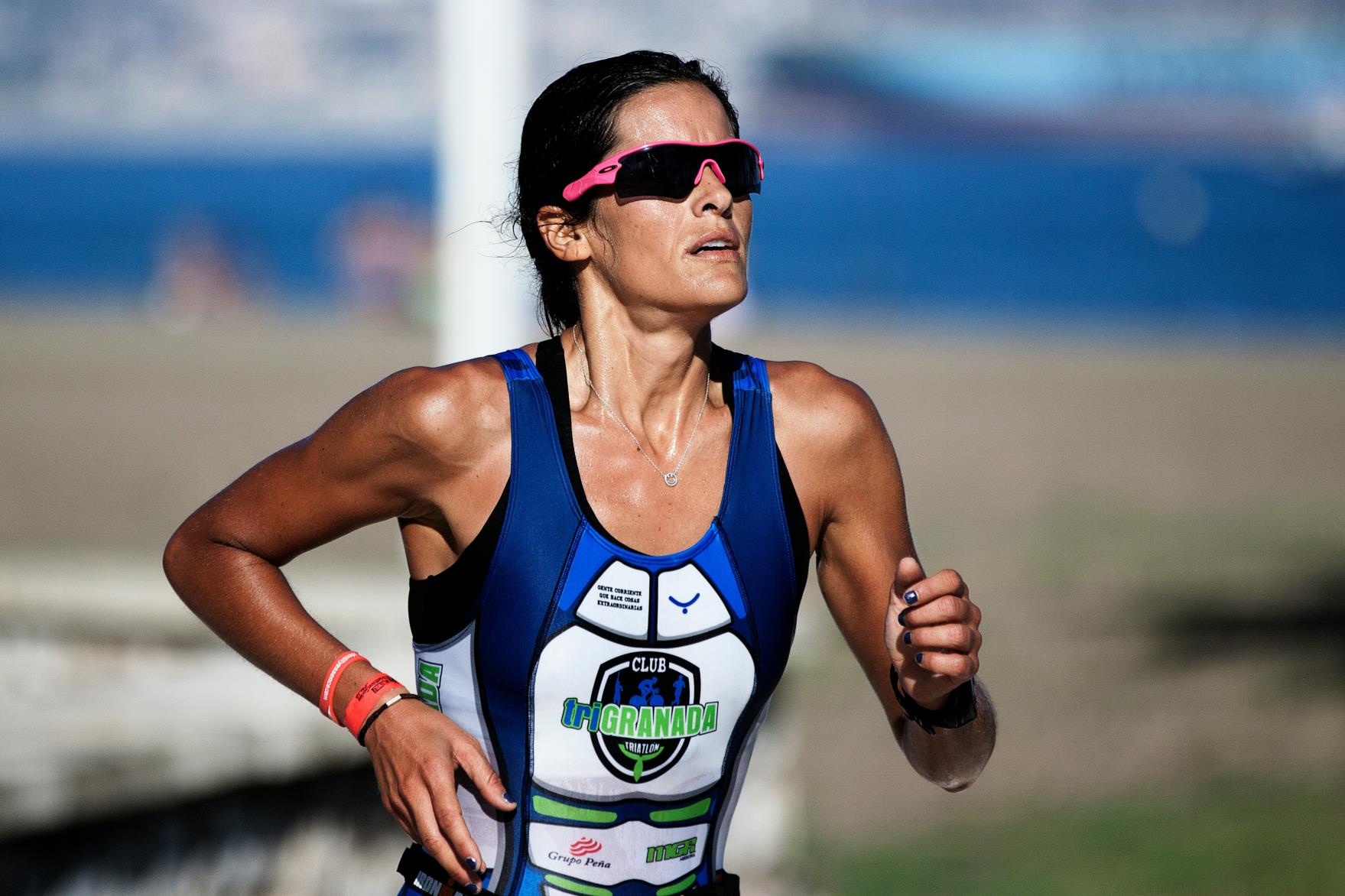Fasting and Fasted Training: a Guide for Female Triathletes
 Karen Parnell
November 21, 2022
Karen Parnell
November 21, 2022
A Female Triathlete’s Guide to Fasting and Fasted Training

Fasted training has been steadily gaining popularity based on research such as that by Liverpool John Moores University and other Universities around the globe, showing evidence of weight loss and enhanced performance under certain conditions. We have also read about professional athletes extolling the virtues of fasted training for extreme challenges and endurance events.
In the triathlon world you may have heard terms like “being fat adapted”, “depleted runs”, “training low” or “fat as a primary fuel source”.
In layman terms, fasted workouts mean training after not eating for several hours.
Dr. Linia Patel, registered dietitian and sports nutritionist says “Training low can be achieved in a number of ways – so find out what works for you. The first is to work out in the morning following an overnight fast. In this state your muscle glycogen stores are likely to be high, but your liver stores are likely to be low. The second method involves working out twice a day and not consuming carbs between workouts. The second workout of the day will be done in a muscle-glycogen depleted state. There is also of course following an Intermittent Fasting (IF) eating pattern like 5:2 or 16:8 and training around this”.
A common practice for athletes is to do a session in the morning without eating. The last meal you may have eaten was dinner, approximately 10 hours prior to your workout. So, your body will be depleted of carbohydrates, therefore relying on stored fat to provide energy. In this state, you are in theory more likely to burn fat for energy, instead of carbs.

Photo by Julia Larson
Download my FREE recipe books here.
Dr Linia Patel says “It turns out that periodically exercising in a glycogen-depleted state changes the metabolic machinery in muscle cells. Muscle cells naturally contain microscopic energy-producing power plants called mitochondria. These micro power plants are what fuel muscle contraction and with glycogen stores in short supply for half the workouts, they were able to adapt their metabolic machinery to be more efficient at burning fat as fuel and thus sparing glycogen.
Subsequent studies of exercise in a fasting state have supported the findings of this research.
Results of numerous studies have shown pretty clearly that training in a glycogen- depleted state increases the ability to utilize fat as an energy source during exercise”.
So, does training in a fasted state increase performance?
Dr Linia says, “The research is clear that training in a glycogen depleted state does increase your ability to oxidise fat. In theory, the metabolic changes that occur in athletes when training in a glycogen depleted state should translate to enhanced exercise capacity. Unfortunately, in reality there is no research showing that changes in fat oxidation translate into performance benefits as yet. To fully understand the potential benefits of train-low strategies we need more research”.
She goes on to say, “It’s also important to remember that you can’t train as hard or fast without having readily available carbs to rely on. Don’t expect to feel particularly good either; exercising on an empty stomach can increase the production of the stress hormone cortisol, which can lead to the breakdown of muscle tissue and put a serious damper on your mood. Exercising in a depleted state can also depress your immune system and could increase your risk of illness or injury. All these factors might compensate for the positive effects of low glycogen training”.

Photo by Aphiwat chuangchoem
Get your FREE Recipes for Menopausal Athletes Book
If you delve deeper into the studies, then you will see that the majority have been conducted on male athletes. So, you may hear your male training partners discussing how well It has worked for them and the improvements they have seen. For female athletes it may be a different story based on anatomical and hormonal differences.
According to Dr. Linia, “So why do women respond so differently? There are a couple of theories. Firstly, the hypothalamic-pituitary-gonadal (HPG) axis which is responsible for regulating key hormones that are involved in functions like appetite control and reproduction is incredibly sensitive to energy intake. The effect of a negative energy balance is thought to work through kisspeptin. Kisspeptin is a protein-like molecule that neurons use to communicate with each other to get important stuff done. Research suggests that women have more kisspeptin than males meaning greater sensitivity to changes in energy balance”.
She goes on to say, “Secondly, it also seems that our livers are different when it comes to energy metabolism. Research looking to livers of mice following IF indicate livers of male mice stop producing energy storage molecules whereas livers of females make use of all available resources in an effort to ‘stock’ the energy necessary to maintain the reproductive capacities. This means if needed the women’s body is more likely to tap into lean muscle mass as an energy source. Negative energy balance is most likely to blame for the hormone domino effect. However, it’s not just about how much you eat. It’s about the other stressors in life (i.e. too little sleep or life stress) that could also trigger a negative cascade effect suggesting that particularly for women there is a time and place for fasting”.

Photo by Susan Flynn
Download my FREE recipe books here.
Why female athletes may want to avoid planning fasted swim, bike and run sessions
Due to biological differences, women are more likely to tap into lean muscle as an energy source if they train in a fasted state. This could stem from female bodies being optimised for reproduction, so stores fat more readily and releases it less readily under certain circumstances.
As such, women are “designed” to hold onto said nutrients because, as far as evolutionary fitness is concerned, her primary purpose is to feed, nurture, and cultivate an entire other human being inside her body for nine months. Women have to create and support another life inside their bodies. They have to provide the food, the water, and the shelter at all times and under all circumstances. If something goes terribly wrong in the “outside world,” that nutrient flow to the foetus could be interrupted, thus putting her evolutionary purpose at risk. So, having adequate fat stores is key to the success of the baby. Hence a female athlete is more likely to tap into lean muscle mass to fuel her fasted training session than fat stores.

Photo by Quino Al
Get your FREE Recipes for Menopausal Athletes Book
How should female triathletes train?
Dr. Linia says, “Female athletes should focus on fuelling themselves adequately so that they are able to cover all metabolic processes and also the energy expended during exercise. This is likely to mean eating all their main meals and including a pre, during and post exercise snack in there. To work out how to do so for them as an individual they should consider speaking to a dietitian or a registered nutritionist”.
For those that want to tinker with intermittent fasting (women and men… keep in mind the following):
• Do it properly. Know when you train low and when to train high. Balance it out. If every workout is a train-low session your ability to train at a high intensity will suffer. You can train low for lower-intensity, longer workouts. Don’t abandon the carbs for high-intensity workouts or competitions.
• More doesn’t necessarily mean better. Don’t make the mistake of shifting the “train low” concept to an overall diet that is low in carbs.
• Build a trusted Support Team to meet your goals. Working with a qualified coach and registered nutritionist who understands your specific goals, work/life situation, dietary requirements and the way you like to train could be the key to optimising your training and achieving your triathlon goals.
Find out about athlete nutrition, Macros and BMR in this Blog.
Download my FREE recipe books here.

Photo by Lily Banse
Download my FREE recipe books here.
Dr. Linia Patel is a director of Linia Patel Nutrition. She is a highly qualified dietitian and sports nutritionist. Linia has extensive experience in a number of different nutrition settings. She is passionate about empowering people to better manage their health and optimise their performance by changing the way they eat. She also has a PhD in Public Health. Her passion is to make science easy-to-digest and practical. Outside of work, Linia enjoys spending time with her family and friends, cooking and entertaining (when she’s not jet setting!). Linia also likes yoga and is a wannabe triathlete!
Qualifications and Training
- PhD Public Health
- MSc. Human Nutrition (Specialising in Public Nutrition & Sport Nutrition)
- Msc. Nutrition & Dietetics
- BSc. Biochemistry & Physiology
- International Olympic Committee Diploma in Performance Nutrition
- Trained in Motivational Interviewing and Self-Management Support
- Trained to deliver the Low FODMAP diet
instagram.com/liniapatelnutrition/ | liniapatel.com
Karen Parnell is a Level 3 British Triathlon and IRONMAN Certified Coach, 8020 Endurance Certified Coach, WOWSA Level 3 open water swimming coach and NASM Personal Trainer and Sports Technology Writer.
Karen is currently studying for an MSc in Sports Performance Coaching at the University of Stirling.
Need a training plan? I have plans on TrainingPeaks and FinalSurge:
I also coach a very small number of athletes one to one for all triathlon and multi-sport distances, open water swimming events and running races, email me for details and availability. Karen.parnell@chilitri.com
Get your FREE Guide to Running Speed and Technique
Get your FREE Swim Workouts for Triathletes E-book
Get your FREE Open Water Swimming Sessions E-Book
Get your FREE Recipes for Menopausal Athletes Book
FAQ: Fasting and fasted training
What is fasting?
Fasting is the practice of voluntarily abstaining from food and, in some cases, drink for a specific period. It can range from intermittent fasting, where you restrict eating to specific time windows, to longer-term fasts that last several days.
What is fasted training?
Fasted training refers to exercising in a state of fasting, typically in the morning before consuming any food. It involves performing physical activity while your body is in a state of low glycogen (stored carbohydrates) and relying more on stored fat for fuel.
What are the potential benefits of fasted training?
Fasted training has gained popularity due to several potential benefits, including:
Fat utilization: When glycogen stores are depleted, the body shifts to burning stored fat for energy during exercise. This may be advantageous for those looking to lose body fat or improve metabolic flexibility.
Insulin sensitivity: Fasted training can improve insulin sensitivity, which is beneficial for overall metabolic health and blood sugar control.
Hormonal adaptations: Some studies suggest that fasted training may enhance the production of growth hormone and increase the body's ability to mobilize and utilize fat for energy.
Are there any drawbacks or considerations with fasted training?
Fasted training may not be suitable or beneficial for everyone. Here are some considerations:
Performance impact: Fasted training may lead to a decrease in exercise performance, particularly during high-intensity or long-duration workouts. It may be more challenging to maintain intensity and endurance without sufficient fuel.
Individual response: People have varying responses to fasted training. Some individuals may thrive and feel energized, while others may experience fatigue, light-headedness, or decreased focus. It's important to listen to your body and adjust accordingly.
Nutrient timing: While fasted training can be effective for some, it's important to consider proper nutrient timing and recovery after the workout. Refueling with a balanced meal or snack containing protein, carbohydrates, and fluids is essential to support recovery and optimize performance.
Health considerations: Fasted training may not be appropriate for individuals with certain medical conditions, such as diabetes, low blood sugar, or other metabolic disorders. It's important to consult with a healthcare professional before engaging in fasted training.
How should I approach fasted training?
If you're considering fasted training, here are some tips:
Start gradually: Begin with shorter duration and lower-intensity workouts to allow your body to adapt to exercising in a fasted state.
Stay hydrated: Drink plenty of water before, during, and after your workout to maintain hydration levels.
Listen to your body: Pay attention to how you feel during and after fasted training. If you experience extreme fatigue, dizziness, or other concerning symptoms, it may be an indication that fasted training isn't suitable for you.
Individualize your approach: Fasted training may work well for some individuals and not for others. Experiment with different approaches and consider factors such as workout duration, intensity, and personal preferences to find what works best for you.
Seek professional guidance: If you have any underlying health conditions, it's recommended to consult with a healthcare professional or a registered dietitian who specializes in sports nutrition to ensure fasted training aligns with your specific needs and goals.
Remember, individual responses to fasted training can vary, and it's important to prioritize your overall health and well-being. Finding a balanced approach to nutrition and training is key for optimal performance and long-term sustainability.
#traithlontrainingplans #runningtrainingplans #swimmingtrainingplans #triathlon #swimming #cycling #running
